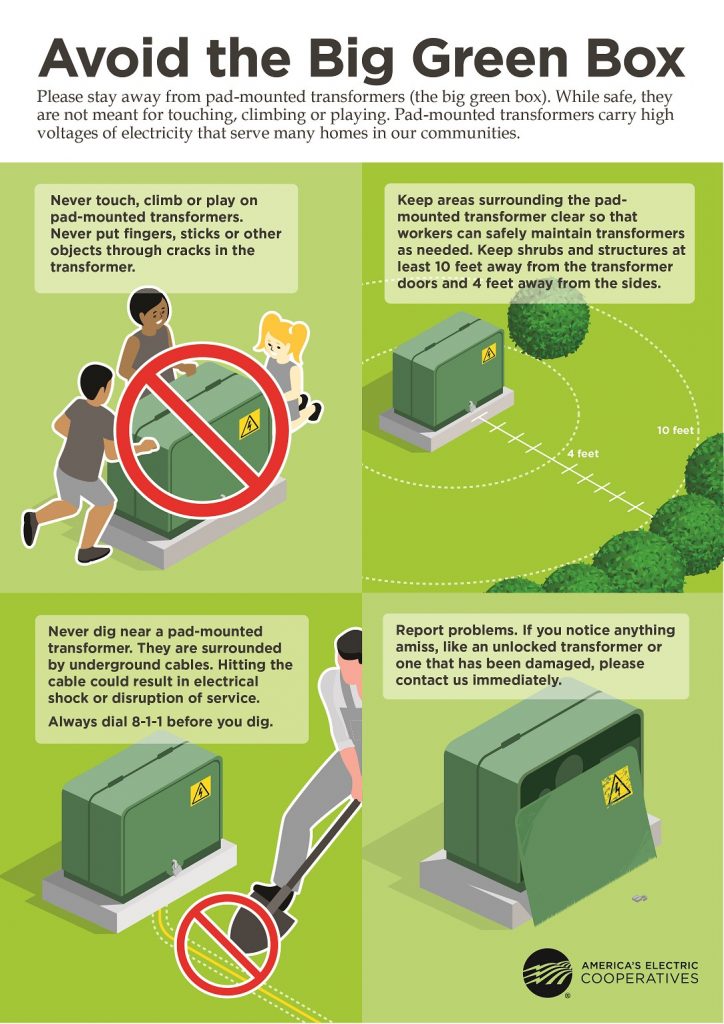Jordan Overbee, a co-op employee in North Carolina, was driving to work when he saw elementary students sitting on a big green metal box. Inside was vital electrical equipment that distributes electricity to several homes on the street.
“It was a bad place for a school bus stop,” Overbee recalled. “There were five kids gathered there to wait for a bus, sitting, talking and playing because it was between driveways.”

Never dig near a pad-mounted transformer. Hitting an underground cable could result in electrical shock or disruption of service. Plus, areas surrounding pad-mounted transformers should be kept clear so workers can safely maintain transformers as needed. Shrubs and structures should be kept at least 10 feet away from the transformer doors and 4 feet away from the sides.
Pad-mounted transformers change voltage from higher levels to voltages people use in their homes.
After seeing the kids waiting at that same transformer several days in a row, Overbee pulled over and talked to some of the parents. He explained that high-voltage electricity flowed through the transformer inside the casing and encouraged them to move a safer distance away.
“The parents hadn’t thought much about it, so once I explained the risks, they were happy to move to another driveway,” Overbee said.
While overhead power lines are mounted on utility poles and substations are protected by security fences, pad-mounted transformers, switch boxes and pedestals are at ground level.
In many newer subdivisions and residential developments, overhead lines are no longer an option. Burying power lines also reduces potential system damage from high winds and severe storms. While consumers seldom see technicians working on the transformers unless there are power outages, they are regularly inspected by co-op crews riding through neighborhoods.
It’s important to not landscape near co-op equipment, so workers can safely make repairs when needed.
Co-op technicians need at least 10-feet clearance at the opening side of a pad-mounted transformer. Approximately 4 feet of open space is preferable at the rear and on the sides of the metal housing.
That distance allows for tool use, including 8-foot-long hot sticks used to work with energized equipment. It also ensures that one or two technicians working on a transformer have space to maneuver should they have to back away if problems occur.
REMC employees have even see a customer use a transformer box as a work bench platform. We obviously had to have him remove it. We always try to explain the risks, and most members are more than willing to cooperate once they understand.
Pad-mounted transformers are connected to primary high-voltage lines, and secondary lines can extend in several directions to distribute power to homes and businesses.
That’s why it’s important to check with Fulton County REMC before planting shrubs or trees, setting fence posts, installing sprinkler systems and digging where it might damage underground lines.
We recommend that you call 811 at least two full business days before you dig for a site assessment and marking before proceeding with projects that might disrupt utility service.
We also encourage public works and transportation departments to keep their equipment, supplies and road debris at least 15 feet away from pad-mounted transformers.
Greg Bitterling
Member Services Manager and Energy Advisor at Fulton County REMC




